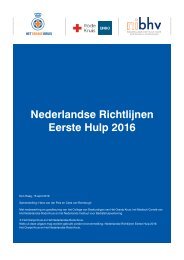Thesis-Anne-Vos-Masters-SBR-and-EU-Law-3
Thesis-Anne-Vos-Masters-SBR-and-EU-Law-3
Thesis-Anne-Vos-Masters-SBR-and-EU-Law-3
Create successful ePaper yourself
Turn your PDF publications into a flip-book with our unique Google optimized e-Paper software.
follows after the subject is raised. The panel contains a stronger (average) participation since this<br />
will result in an advice of the citizens that have to be taken into consideration by the authorities.<br />
Referenda can be ascribed as maximum participation, although depending on the type of<br />
referenda. 287 These may occur in three phases of the process: during the agenda, preparation <strong>and</strong><br />
decision-making. Other phases may also occur. 288 Addink also points out that the greater the<br />
potential of the administrative act, the more people should be involved in the participation process.<br />
Addink distinguishes three forms of appreciation of the participation. First of all, participation may<br />
occur as a necessary complement with respect to representative democracy (e.g. when a majority<br />
government takes the minority insufficiently in consideration), in order to increase legitimacy of the<br />
administration or in order to exercise powers as close to citizens as possible (decentralisation). 289<br />
Application of principle to environmental issues<br />
The transparency principle is considered of great importance with regard to environmental issues.<br />
This was already established by the Rio Declaration in Principle 10 which states that<br />
"environmental issues are best h<strong>and</strong>led with the participation of all citizens, at the relevant level,<br />
<strong>and</strong> thus public education, participation <strong>and</strong> access to information <strong>and</strong> redress should all be<br />
promoted”. In the Aarhus Convention this principle also received great attention. As mentioned in<br />
the previous paragraph, two <strong>EU</strong> Directives were adopted which were greatly inspired by the Aarhus<br />
Convention. The first of these Directives concerned the transparency principle. The second<br />
concerned the Directive 2003/35/EC providing for inter alia public participation in respect of the<br />
drawing up of certain plans <strong>and</strong> programmes relating to the environment. The Directive states in its<br />
preamble that effective public participation in the taking of decisions enables the public to express,<br />
<strong>and</strong> the decision-maker to take account of, opinions <strong>and</strong> concerns which may be relevant to those<br />
decisions. Hereby the accountability <strong>and</strong> transparency of the decision-making process will be<br />
increased. This will contribute to public awareness of environmental issues <strong>and</strong> support for the<br />
decisions taken. Participation should include participation by associations, organisations <strong>and</strong><br />
groups, in particular non-governmental organisations promoting environmental protection.<br />
Moreover, public participation is of central importance in the EIA <strong>and</strong> SEA Directives which also<br />
illustrates the importance of the principle. It is argued that public participation can lead to a better<br />
decision, because it provides a valuable source of information on key impacts, a consideration of<br />
citizen's needs, more legitimacy, the addressing of conflicts in a previous stage <strong>and</strong> better<br />
implementation. 290 However, a distinction should be made between "the public" <strong>and</strong> "the public<br />
concerned". The latter has the right to access environmental information, to participate actively<br />
(Article 6) <strong>and</strong> is guaranteed access to courts (Article 11). Only those with a direct interest fall<br />
under this category <strong>and</strong> NGO's receive a special supervisory rule by this article. 291 The EIA<br />
Directive contains many information requirements on several occasions; before the granting of an<br />
authorization to the public (Art. 4(4) <strong>and</strong> 6(1)(2)), the public concerned (Art. 6 (2)-(4) <strong>and</strong> Art. 8)<br />
<strong>and</strong> the public of foreign MS (Art. 7); when the decision is taken (to the public <strong>and</strong> the public of<br />
foreign MS if necessary according to Art. 9); <strong>and</strong> during the review procedure (Art. 11). This shows<br />
the importance of the public participation principle. This is also confirmed by the CJ<strong>EU</strong>. 292 The<br />
Commission gives as examples of participation: public meetings, advisory panels, open houses,<br />
interviews, questionnaires <strong>and</strong> participatory appraisal techniques. 293<br />
Other environmental <strong>EU</strong> legislation also emphasise the importance of public participation. In the<br />
Water Framework Directive (WFD), also of relevance for shale gas exploitation, Article 14<br />
287<br />
Addink (2009), pp. 104-105.<br />
288<br />
Addink (2009), p. 99.<br />
289<br />
Addink (2009), pp. 108-109.<br />
290<br />
http://ec.europa.eu/environment/legal/law/pdf/eia/6%20PP%20in%20EIA%20<strong>and</strong>%20SEA%20session%207_revised2.pd<br />
291<br />
C-263/08, Djurgarden [2009] ECR I-09967, paragraph 40; A-G Sharpston on C-263/08, Djurgarden,paragraph 50.<br />
292<br />
C-435/97, WWF <strong>and</strong> others / Autonome Provinz Bozen <strong>and</strong> others [1999] ECR I-05613.<br />
293<br />
http://ec.europa.eu/environment/legal/law/pdf/eia/6%20PP%20in%20EIA%20<strong>and</strong>%20SEA%20session%207_revised2.pd<br />
64



